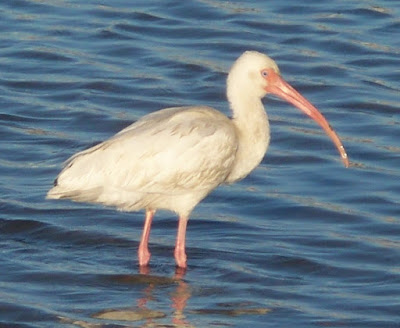I was finishing lunch in Mint Hill last Saturday when I got the
call: a flock of American avocets had been found on a large mudflat on the
southern shore of Lake Norman. I had not previously seen that species in
Mecklenburg County so I immediately postponed some household chores and headed
the birds’ way. Thanks to 70 mph speed allowances and the I-485 connector to
I-77, I arrived in about 35 minutes. I needn’t have hurried so. A beautiful
flock of 10 American avocets was loafing in the shallow water just off the
flat.
American avocets are among the most spectacular and elegant shorebirds
in North America. They are large and strikingly colored with a cinnamon-colored
head and neck, black and white wing stripes, and blue legs. But the most
unusual thing about avocets is their bill. The bill is long, thin and turns upward. Avocets sweep it sideways in the
shallows to catch small invertebrates.
American avocets breed over a large portion of the country
west of the Mississippi River. They spend the winter sparingly along the
southeastern coast, arriving in august and September. I suspect the Lake Norman
flock was heading for a barrier island off the Carolina or Georgia coast. The birds
varied in plumage with the fading cinnamon head parts still visible in some
individuals while others had those areas white. They may have been immature
birds or adults that had already molted away the cinnamon plumage.
The sighting is just the second county record for the
species. I feel really fortunate I was in town and answered my phone to get the
report. By 7:45 the next morning the flock had moved on. I can go a couple of
years nowadays without adding a new bird species to my county list.
As I have mentioned several times in the last month, there
is a load of shorebird habitat right now along the Catawba River and smaller ponds.
Water levels are low and in the next month I suspect more highly unusual
sighting will come to light as shorebird migration peaks. Conditions are this
good every ten years or so. If you encounter shorebirds try to snap a photo and
send it to me. I am interested in seeing what is coming through.
In breeding plumage the American avocet is quite striking. Note the odd upturned bill.
 |
| American Avocet by Phil Fowler |
Even in non-breeding plumage the birds are quite elegant.
 |
| American Avocet by Phil Fowler |
American avocets are flocking birds, rarely encountered alone.
 |
| American Avocets by Phil Fowler |



















